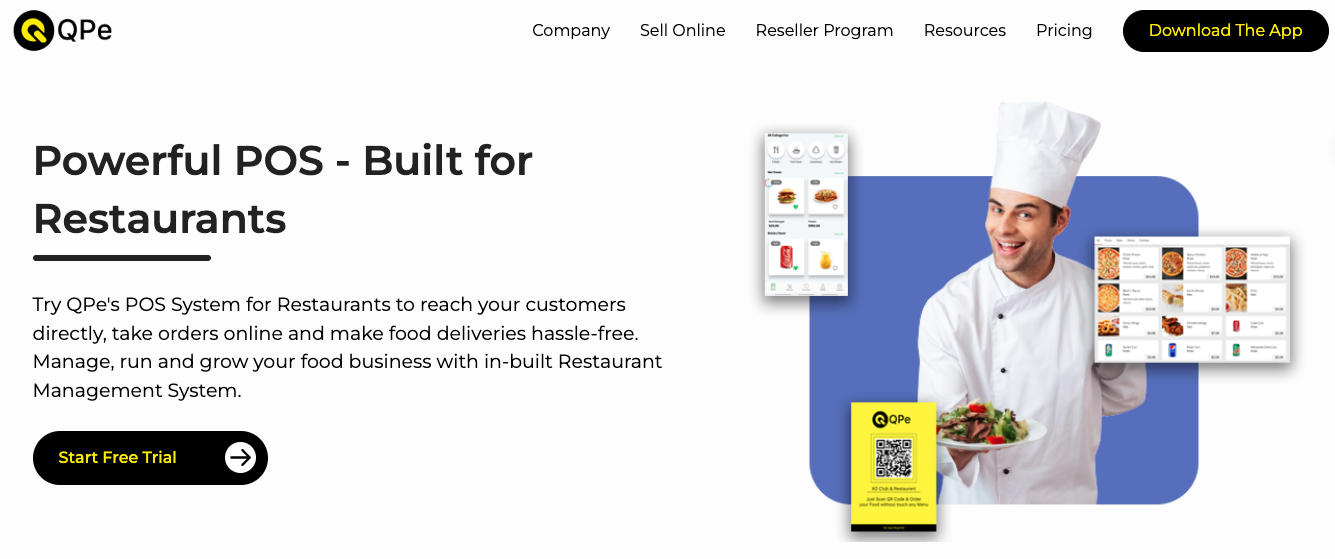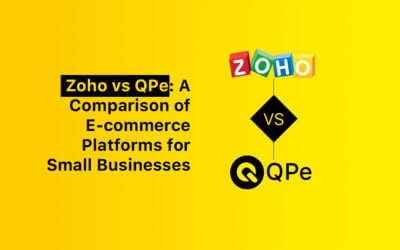In the rapidly evolving world of food delivery services, restaurants are constantly seeking ways to cut costs and maximise their profits. One of the recent trends in the industry is the shift “from relying solely on popular platforms like Zomato to embracing new alternatives”. This article delves into the reasons behind this shift and explores how QPe is becoming an attractive option for restaurant owners.
Market Research: Identifying the Need for Change
In order to understand why restaurants are switching from Zomato to QPe, it is essential to consider the insights gained through market research. Many studies and surveys conducted among Zomato restaurant partner have revealed several key drawbacks of food delivery giant. So let’s take a look at the cons associated with relying solely on one platform for online food delivery services.
Zomato’s Drawbacks: Challenges for Restaurants
- High Commission Fees: Zomato charges a significant percentage of each order as commission fees, reducing the profitability of restaurants. This financial burden can have a substantial impact on SMB’s overall earnings.
- Increasing Competition: With the growing popularity of food delivery platforms, the competition on Zomato has intensified. Restaurants face challenges in standing out among numerous options available to customers, which can affect their visibility and order volumes.
- Limited Control and Flexibility: Some restaurant owners have expressed concerns about the lack of control over menu customisation, pricing, and handling of orders. The inability to make real-time adjustments based on market demands can hinder a restaurant’s ability to optimise its operations effectively.
- Communication Gaps: Effective communication between restaurants and customers is crucial for a seamless dining experience. However, some Zomato delivery partners have reported difficulties in maintaining direct and transparent communication with customers on the platform. So it’s equally important to filling the communication gaps to avoid potential misunderstandings or inaccuracies in order preparation.
- Security Concerns: Throughout its existence, the food delivery app has unfortunately fallen victim to multiple hacking incidents, resulting in a significant compromise of user data. It potentially has affected at least 17 million users, according to reports. These recurring security breaches pose a significant challenge for Zomato, further causing immense distress and potential damage to its reputation.
- Customer Data and Behaviour Analytics: In addition to above points, Zomato does not provide restaurants with access to valuable customer data, behaviour analytics, and customer insights. This lack of access to customer information can hinder restaurants partnering with Zomato. This may come as a barrier for understanding target audience in order to tailoring offerings accordingly. Without customer behaviour analytics, these restaurants may struggle to identify trends, preferences, and patterns that can inform their business strategies. As a result, they may find it challenging to make data-driven decisions and optimise their operations effectively.
- No brand building for restaurants: Next, Zomato company primarily focuses on building its own brand rather than helping restaurants build their individual brands. This can be a significant drawback for restaurants looking to establish a unique identity and cultivate a loyal customer base.
- Zomato has launched its own cloud kitchens: What’s more! Zomato has entered the cloud kitchen space and allocates a significant portion (90%) of quality orders to its own cloud kitchens, leaving the remaining orders for other restaurants listed on the platform. This arrangement can negatively impact the visibility and order volumes of non-cloud kitchen restaurants, creating an uneven playing field.
- Premium listing charges: Zomato charges restaurants for premium listings, which can be an additional financial burden for establishments already struggling with high commission fees. This expense may not be justifiable for all restaurants, especially smaller ones with limited marketing budgets.
- Order cancellation and refunds: Lastly, restaurants partnering with Zomato are responsible for handling order cancellations and refunds, which can be time-consuming and resource-intensive. As a result, this added responsibility can divert their attention from core business operations and impact overall efficiency.
How QPe works better than Zomato?

QPe, as a SaaS-based ecommerce platform bringing small and medium (offline) businesses online. QPe has emerged as a solution that addresses the drawbacks experienced by restaurants partnering exclusively with Zomato.
Here’s how QPe stands out and offers advantages over Zomato:
- Lower Commission Fees: QPe offers a more cost-effective approach, with significantly lower commission fees compared to Zomato. Because this allows restaurants to retain a larger portion of their earnings and improve their overall profitability.
- Enhanced Control and Flexibility: Next, QPe empowers restaurant owners by providing them with greater control over their operations. This include customisable menus, pricing management, and real-time order handling capabilities. Thus, enabling restaurants to adapt swiftly to changing market demands and optimise their strategies accordingly.
- Transparent Communication: Furthermore, QPe facilitates direct and transparent communication between customers and restaurant staff, minimising the chances of miscommunication. This ensures that orders are accurately prepared, leading to higher customer satisfaction rates.
- Integrated Loyalty Programs: QPe offers integrated loyalty programs and personalized promotions, helping restaurants build a loyal customer base. By incentivising repeat business, QPe supports customer retention efforts and drives revenue growth for restaurants.
- Dedicated Support and Training: QPe provides dedicated customer support and training to help restaurants make the most of the platform’s features and capabilities. So, from onboarding assistance to ongoing technical support, QPe ensures that restaurants receive the guidance they need to optimise their operations and achieve their business goals.
FINAL THOUGHTS
Overall, QPe stands out as a more cost-effective, flexible, and supportive ecommerce platform for restaurants. QPe’s POS software management system for Restaurants makes it ultimate choice for food businesses.
Moreover, QPe’s support team identifies and addresses the limitations & challenges faced by restaurant owners. As a result, QPe brings modern business solutions which can help food businesses thrive in their niche.
Finally, in a nutshell, QPe empowers restaurants to thrive in a competitive market and achieve sustainable growth. The emerging ecommerce platform offers lower commission fees, enhanced control, transparent communication, and customer data insights. Additionally, the platform’s primary focus is providing brand building opportunities to all kind of businesses.
Try QPe for Restaurants today: Check pricing and Start Your Free Trial!



